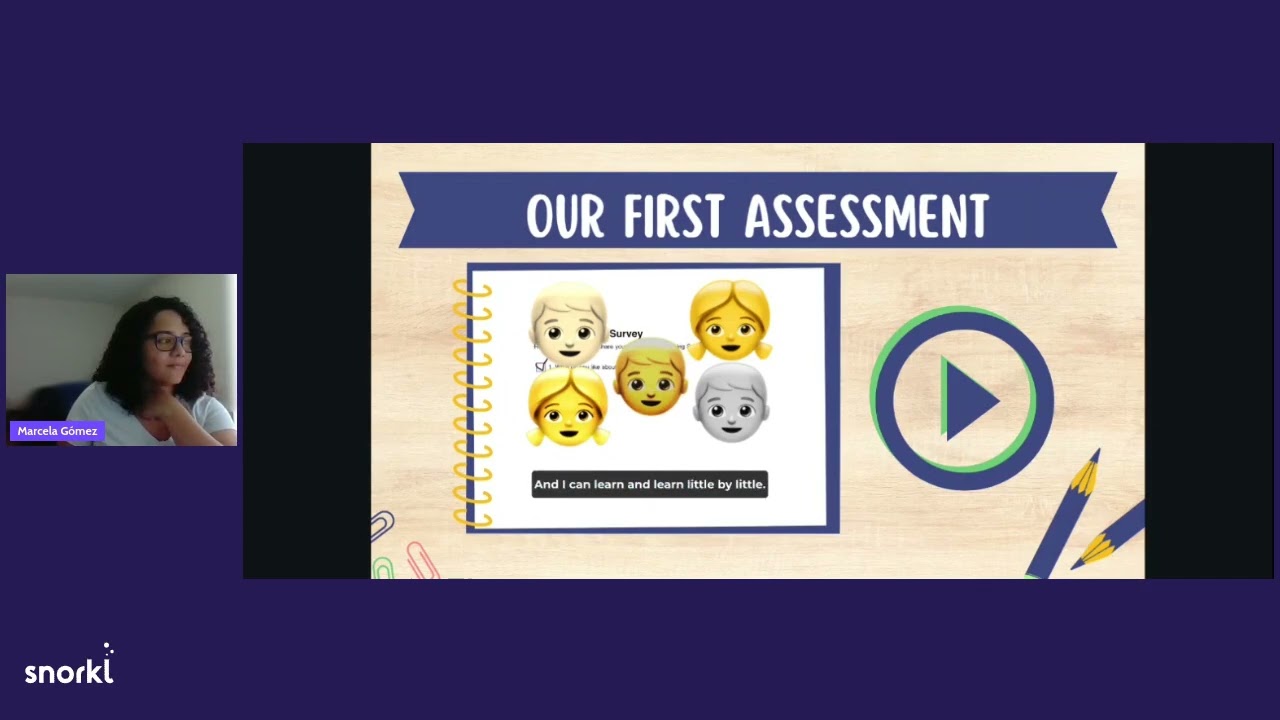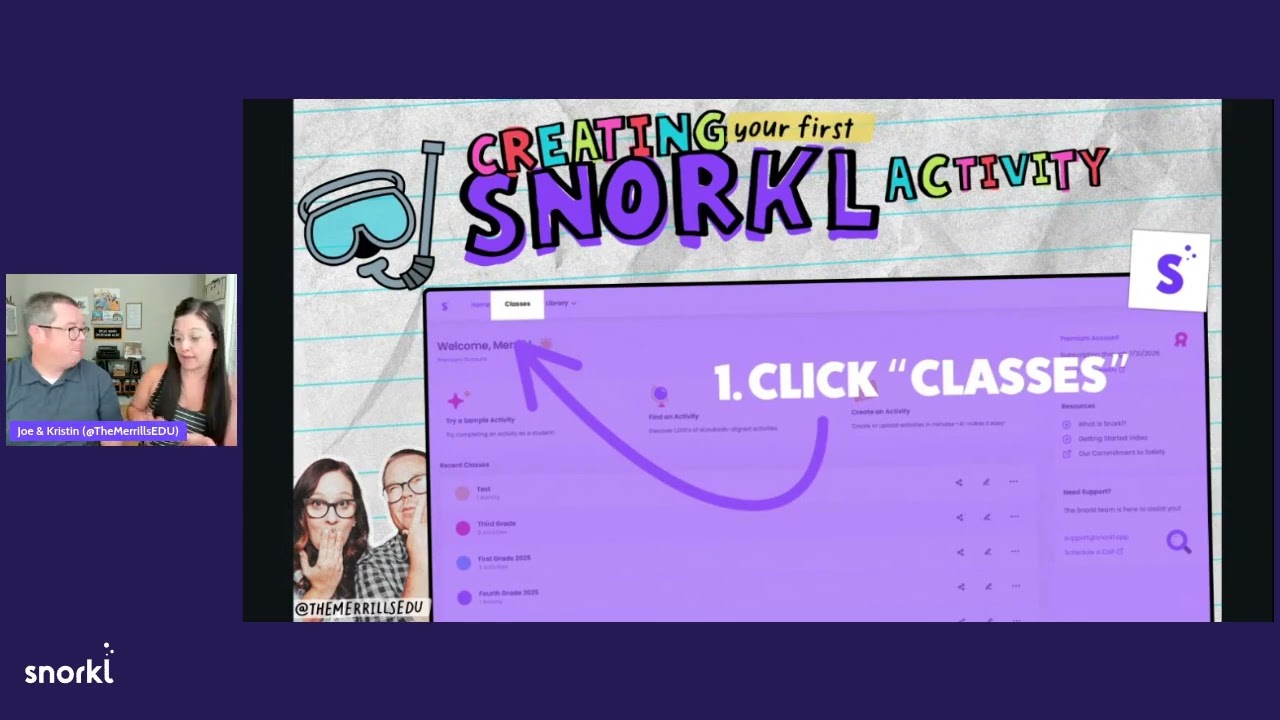
How to Use Snorkels for English Learners: A Practical Guide from Marcela Gomez
Timeline 00:00 Welcome and introduction to using Snorkl 00:11 Snorkl's contribution to improving math, science, and language skills in fourth and fifth graders is mentioned. 00:33 Emphasizes that Snorkl is a tool that helps students find their voice and recognize the value of their ideas. 01:29 Presenter Marcela Gomez's introduction and teaching philosophy 01:29 Marcela Gomez is a math and science teacher who focuses on helping students use their voices to solve problems. 01:49 She reveals that she is an ELL from Colombia, a STEM teacher and advocate, and a visiting international teacher in Houston. 02:18 Students' Backgrounds and Teaching Approaches 02:29 Explain that most students are of Hispanic heritage, but there are also students from the Middle East and South Asia. 03:12 He emphasized that the school model needs to change to one that encourages students to 'use their voices', as students tend to be afraid to speak up. 03:43 Focus on measuring student voice through TELPAS and STAR tests. 04:48 Explain that if students can't confidently communicate their thoughts in the language they're learning, it's difficult for them to succeed. 05:27 As a math and science teacher and ELL, I strive to teach language in context and show students that they can succeed. 05:49 Snorkl Introduction and Early Success Strategies 05:49 Snorkl noted that he was trustworthy in providing effective feedback and similar feedback to teachers. 06:44 Suggests specific ways to utilize the class, including writing scripts using Snorkl, recording 1-2 minutes, and conducting activities for 45 minutes twice a week. 07:15 Set training time considering the TELPAS speaking test time limit. 07:56 Encourage verbal expression practice by posing questions in a way that helps visually impaired classmates explain problems. 08:25 Set classroom expectations to hold students accountable for their script writing and recording process. 08:44 Emphasize that students are encouraged to address script issues and provide feedback to their classmates before recording. 09:12 Script writing steps: Read the question aloud, explain the plan, demonstrate the task, and answer the question. 10:08 Feedback and effectiveness from students using Snorkl 10:23 Play a video of students sharing their experiences using Snorkl. 10:46 Students positively evaluated Snorkl's AI feedback for improvement and vocabulary tips. 11:39 Students reported that Snorkl helped them learn, allowed them to re-do problems, and gave them confidence. 11:53 Students experience improved reasoning skills by applying Snorkl strategies to STAR test preparation. 12:29 A student who lacked confidence gained confidence through Snorkl, and a female student who was afraid to speak gained experience of success through a Snorkl assignment. 13:28 Data-Driven Results and Strategy Improvements Using Snorkl 13:44 Presentation of correlation analysis results between midterm and STAR exam results and Snorkl practice. 14:49 Snorkl noted that students who received a 'strong' rating performed better on TELPAS and STAR tests. 15:23 Second attempt, changing the frequency and intensity to shorter workouts, 4 times a week. 15:49 Reading Teachers join as educational partners to expand Snorkl's reach. 16:15 Expand your English language use with a variety of formats, including strip diagrams, comparison charts, and ECR (claim, evidence, reasoning) using the Snorkl whiteboard. 17:08 The gap between the midterm and the original exam has narrowed, showing that the number of students who have mastered the material has increased. 18:27 Highlights increased 'Satisfactory' and 'Master' rates in TELPAS, STAR Math, and STAR Science. 18:53 Graph showing the correlation between Snorkl and TELPAS, STAR Math, and STAR Science scores over two years. 20:33 Snorkl Utilization Plans and Q&A for the New School Year 20:39 I plan to set expectations and develop students' self-directed learning habits through 15-minute Snorkl activities every morning for the new school year. 21:16 Students prepare scripts, record them, review feedback, and revise them three times a day. 22:42 Sharing tips for students who are new to Snorkl or are hesitant to learn, without forcing them, and encouraging them to feel comfortable participating by testing the tools together. 25:49 For students who struggle with writing, pair them with a student who is good at speaking and help them write a script together. 26:48 The teacher demonstrates using Snorkl first, showing his script and recording. 27:37 Assign activities to help fourth graders become familiar with Snorkl so they can better utilize the tool in fifth grade. 28:08 Engage students in fun ways, like the "Getting Started" activity in the Snorkl library. 📊 Summary of Key Results Learner Background : Houston Hispanic 4th-5th grade English Language Learner (ELL) Period of Use : Continuous use for 2 years (2023-2025) Key Achievements : Increased TELPAS pass rates, improved STAAR math and science achievement. Core Strategy : 4-Step Process: Script → Record → Review → Iterate 🎯 Problem Recognition: Finding Your Voice The reality Marcela Gomez (a Colombian mechanical engineer turned teacher) encountered in Houston: "The children were eager to learn, but afraid to speak up. They were passive learners who simply received instructions." Core Philosophy : "You have a voice, so use it." 📝 Step 1: Script it Out Basic Structure (4 Steps) Read the question aloud Explain the plan Show the solution process Final Answer Mr. Gomez's Guide "Solve the problem in a notebook first to make sure the solution is clear." "You need to understand it enough to be able to explain it step by step." 🎙️ Step 2: Record (1-2 minutes)
- ContenjooC






































